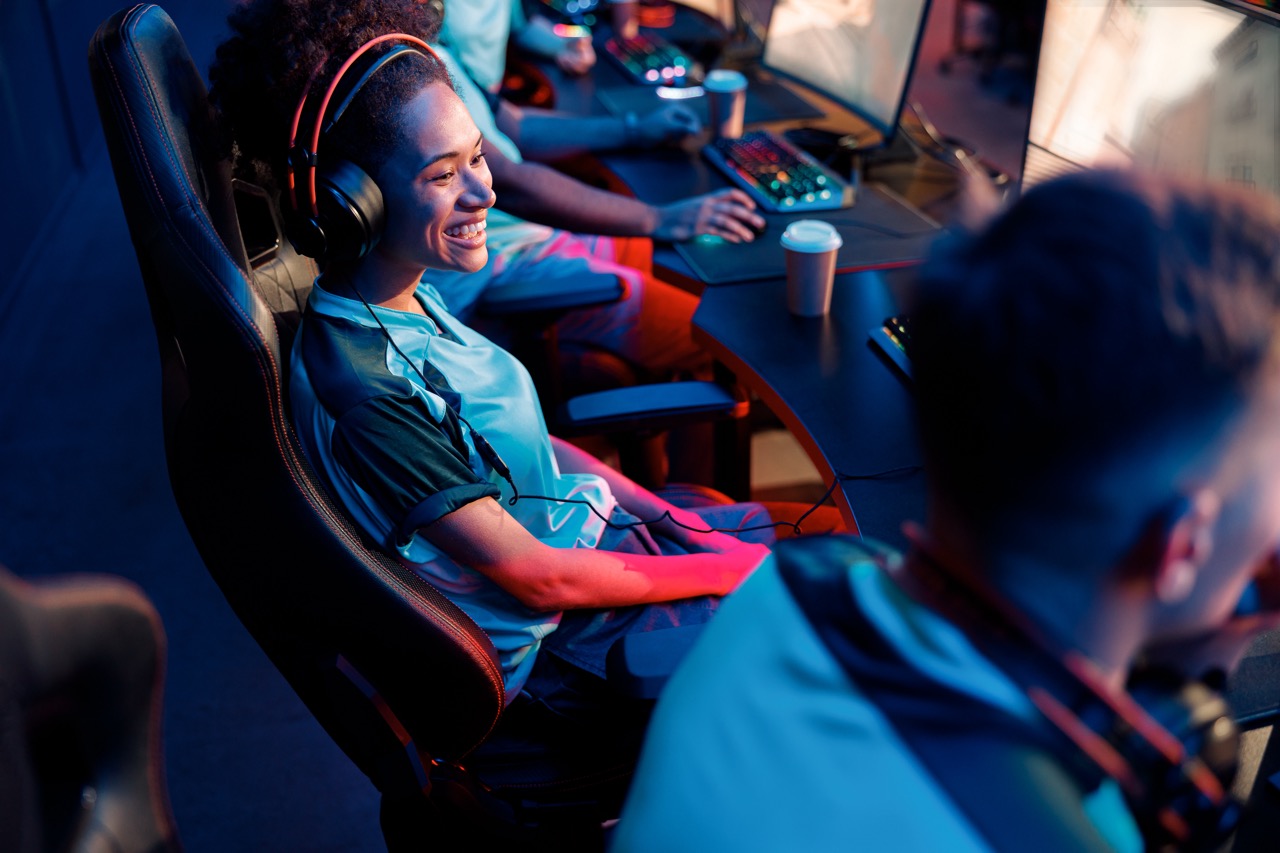Cinematic cutscenes have become a hallmark of modern video gaming, elevating narratives and immersing players in rich, engaging stories. Gone are the days when gameplay was solely the focus; now, cinematically crafted moments weave a tapestry of emotions, excitement, and unforgettable experiences. In this article, we’ll explore some of the best cinematic cutscenes in gaming history, delving into how these moments transformed storytelling, defined iconic scenes, showcased artistry, evoked feelings, and evolved through time.
Epic Storytelling: The Magic of Cinematic Cutscenes
Cinematic cutscenes have the power to transport players into a different realm, providing a break from interactive gameplay to delve into deeper narratives. These moments allow developers to craft intricate story arcs that can unfold in ways that gameplay mechanics alone might not convey. In franchises like Final Fantasy and Metal Gear Solid, cutscenes have served as crucial narrative devices, enhancing character development and plot twists that keep players on the edge of their seats.
Moreover, cutscenes can introduce critical lore and background details that flesh out the game world. Think about how the breathtaking cinematic sequences in The Last of Us showcase the devastating impact of a post-apocalyptic world, emphasizing the human condition and the lengths people will go to survive. These storytelling techniques not only create tension but also build emotional investment in characters and their journeys.
The magic of cutscenes lies in their ability to combine visuals, sound, and narrative in a way that draws players into the story. They create a cinematic experience that can rival that of movies, offering unique perspectives and emotions that might be difficult to convey through gameplay alone. This blending of storytelling mediums has opened up new avenues for creativity, allowing developers to push the boundaries of what gaming can achieve.
Ultimately, cinematic cutscenes have redefined the narrative possibilities of games, ensuring that players remain engaged and emotionally connected. As we explore iconic moments and their impact on the industry, it’s clear that cutscenes are more than just transitions; they are a critical element in the art of storytelling in gaming.
Iconic Moments: Cutscenes That Changed Gaming Forever
Some cutscenes have left a lasting imprint on gaming culture, transforming not just the narratives of their own games but the very landscape of the gaming industry. The opening sequence of Final Fantasy VII introduces players to a dystopian world and a motley crew of characters, setting the stage for an unforgettable journey. Its blend of stunning visuals and compelling storytelling has solidified it as one of the most memorable moments in gaming history.
Another iconic cutscene is the “Doomsday” moment from The Legend of Zelda: Ocarina of Time, where Link battles Ganon. The tension, stakes, and emotional weight of this confrontation are palpable, encapsulating everything that made this game a classic. Such moments not only resonate with players but also inspire a new generation of game developers to harness the power of storytelling through cutscenes.
Cutscenes can also serve as pivotal narrative pivots. For example, the shocking twist in BioShock involving Andrew Ryan’s identity and relationship to the player is delivered through a masterfully executed cutscene that has become the stuff of legends. This revelation changed the way players viewed their relationship with the game’s world, forever altering perceptions of agency and choice in narrative-driven experiences.
These unforgettable moments extend beyond mere plot points; they influence how future games approach storytelling and character development. As players reminisce about their experiences, it’s evident that cutscenes have not only changed individual games but paved the way for a new standard in the industry.
Visual Masterpieces: Artistry in Game Cutscenes
When discussing the best cinematic cutscenes, one cannot overlook the stunning artistry that goes into their creation. Games like God of War and Red Dead Redemption 2 elevate the art form by using incredible graphics and animation techniques that push the limits of the medium. The breathtaking visuals, combined with expert direction, create sequences that leave players in awe and further immerse them in the game’s world.
The design of cutscenes often reflects the artistic vision of the developers, showcasing unique styles that can vary widely from one game to another. For instance, the hand-painted aesthetics of Cuphead and the cel-shaded graphics of Borderlands create visually striking moments that enhance their respective narratives. This artistry isn’t merely for show; it serves to bolster the emotional weight of the story and the stakes involved.
Moreover, the choreography and pacing of cutscenes play a crucial role in how players perceive the action. In titles like Uncharted, the cutscenes flow seamlessly into gameplay, creating a cinematic experience that feels both engaging and dynamic. This integration challenges the notion of traditional storytelling in games, as players are often left breathless by the high-octane action paired with stunning visuals.
As technology continues to advance, the potential for visual masterpieces only grows. With real-time rendering capabilities and emerging techniques like motion capture, cutscenes are becoming more immersive and breathtaking than ever before. The visual artistry in gaming cutscenes not only captivates players but redefines the boundaries of what stories can be told in this medium.
Emotional Impact: Cutscenes That Made Us Feel
Cinematic cutscenes excel at eliciting strong emotional responses, and some of the most poignant moments in gaming history are delivered through these cinematic experiences. The heart-wrenching goodbye scene in The Last of Us encapsulates themes of love, loss, and sacrifice, leaving players with a lingering sense of melancholy. Moments like these showcase gaming as a powerful medium for storytelling that evokes genuine feelings.
In Life is Strange, choices made during gameplay culminate in emotional cutscenes that resonate deeply with players. The protagonist’s journey through friendship, love, and grief is beautifully portrayed through carefully crafted sequences, encouraging players to reflect on their own lives and decisions. This ability to connect on a personal level is a testament to the emotional power of cutscenes in gaming.
Additionally, cutscenes can serve to humanize characters, making players feel invested in their outcomes. The tragic fate of characters in titles like Final Fantasy VII or Mass Effect often hinges on cutscenes that reveal their struggles and vulnerabilities. These moments create an emotional bond between players and characters, making their journeys and eventual fates feel consequential.
The emotional impact of cutscenes is further amplified by the music and sound design that accompany them. The haunting scores and expertly timed sound effects enhance the storytelling, ensuring that players feel every beat of the narrative. As a result, cutscenes have become a vital component of emotional storytelling in games, leaving indelible marks on the hearts and minds of players.
Game Changers: How Cutscenes Evolved Over Time
The evolution of cinematic cutscenes has mirrored advancements in gaming technology and narrative techniques. In the early 90s, cutscenes were often rudimentary and pixelated, serving more as a means to convey information than as a storytelling tool. However, as consoles became more powerful, the potential for cinematic storytelling expanded, leading to more elaborate and polished cutscenes that captivated players.
The transition from 2D sprites to 3D graphics in the late 90s marked a significant turning point for cutscenes. Titles like Final Fantasy VIII showcased pre-rendered CGI cutscenes that amazed players, elevating the visual experience and narrative depth. This shift demonstrated how cutscenes could become a vital part of the gaming experience, not just a mere transition between gameplay segments.
With the advent of real-time rendering, cutscenes became even more integrated into gameplay. Games like The Witcher 3 and Horizon Zero Dawn utilize real-time cutscenes that seamlessly transition from action to narrative, allowing players to remain immersed in the story without breaking the flow. This evolution has transformed how players engage with narratives, making cutscenes feel like a natural extension of the gameplay experience.
As we look toward the future, the potential for cutscenes continues to grow with advancements in virtual reality and interactive storytelling. The line between cutscenes and gameplay is increasingly blurred, creating opportunities for developers to craft narratives that are not just watched but experienced. The evolution of cinematic cutscenes has been a game changer in the industry, redefining storytelling and enhancing the emotional investment in video games.
From Pixels to Perfection: Best Cutscenes Ranked
When it comes to ranking the best cinematic cutscenes in gaming history, a few standout moments immediately come to mind. The opening scene of The Elder Scrolls V: Skyrim, where players are thrust into a world filled with dragons and destiny, is iconic for its breathtaking visuals and epic scale. This moment perfectly encapsulates the game’s grand narrative and sets the tone for countless adventures to follow.
Next on the list is the unforgettable “Milo and Kate” cutscene from Project Milo, which showcased groundbreaking AI technology and emotional storytelling. Although not a full-fledged game, its use of cutscenes to illustrate the potential of interactive narratives left a mark on the industry and prompted discussions on the future of gaming experiences.
We must also recognize the emotional rollercoaster that is The Last of Us, especially the prologue cutscene. This heart-wrenching introduction immediately connects players with the characters and stakes, setting a high bar for narrative-driven games. The raw emotion conveyed in this sequence remains unmatched, making it a defining moment in gaming history.
Finally, we can’t overlook Metal Gear Solid 4: Guns of the Patriots, which features some of the most elaborate and cinematic cutscenes ever created. These lengthy sequences push the boundaries of storytelling in games, blending film-like cinematography with deep philosophical themes. The combination of high production values and thought-provoking writing makes this title a quintessential example of how far cutscenes have come.
Cinematic cutscenes have undeniably transformed the gaming landscape, evolving from basic narrative tools to powerful storytelling mediums that captivate audiences. Through epic storytelling,










